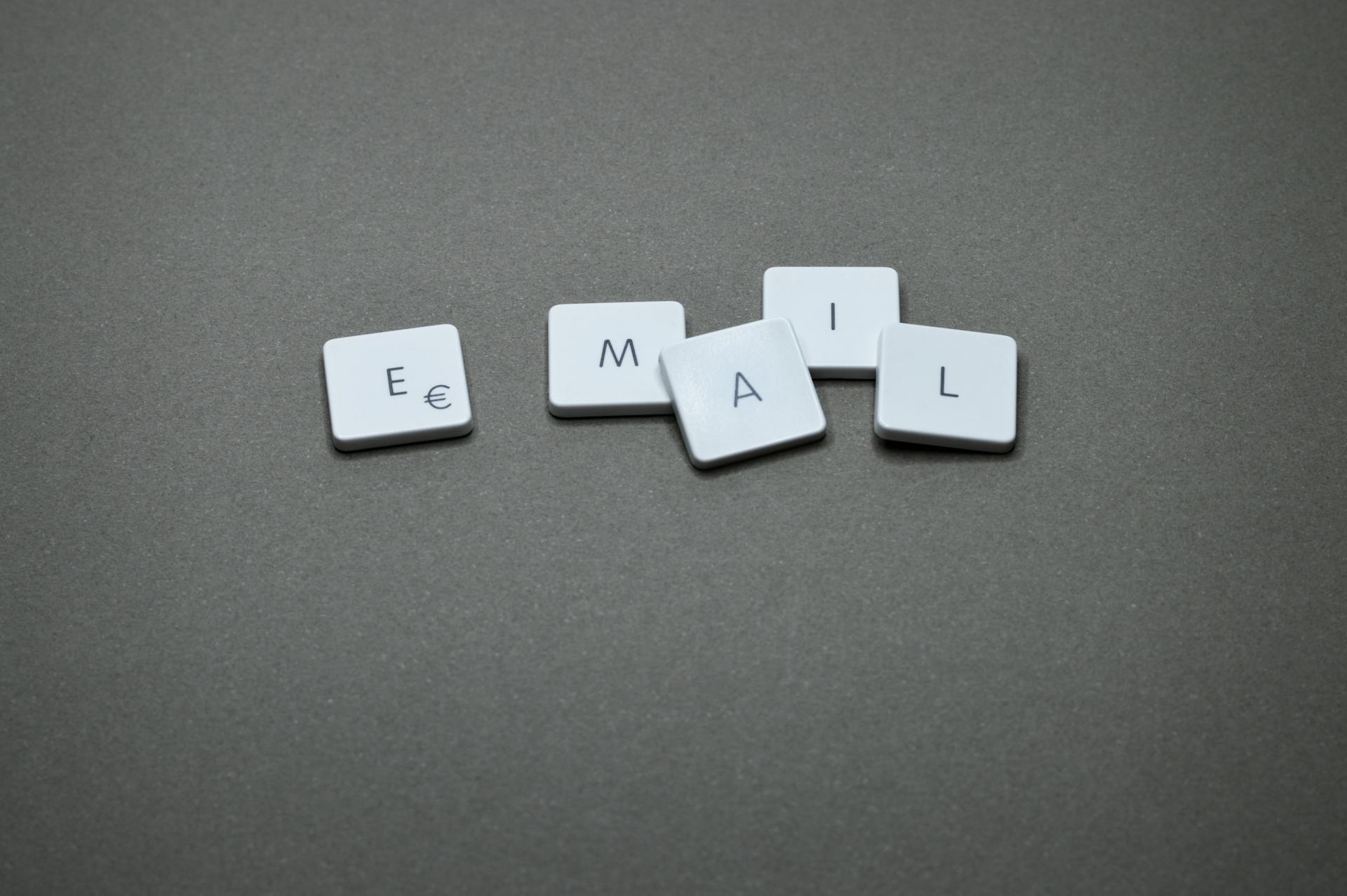In a world overflowing with information and digital distractions, the humble email remains one of the most powerful tools in a marketer’s arsenal. Did you know that for every dollar spent on email marketing, businesses can expect an average return of $42? This statistic underscores the undeniable impact of well-executed email campaigns on customer engagement and revenue generation.
Email marketing is the practice of sending targeted messages to a group of individuals via email, aiming to foster a connection with potential and existing customers. Unlike social media or traditional advertising, email allows businesses to communicate directly with their audience in a personalized manner, driving meaningful interactions and conversions.
In today’s fast-paced digital age, where consumers are bombarded with content from various platforms, email marketing stands out as a unique channel that nurtures relationships and builds trust. Its ability to deliver tailored content right to a user’s inbox makes it a crucial component of any effective marketing strategy.
This article aims to guide you through the essential steps to create an effective email marketing campaign, from understanding your audience and setting clear goals to crafting compelling content and optimizing your efforts. Whether you’re a seasoned marketer or just starting, you’ll find valuable insights to enhance your email marketing strategy and connect with your audience in a meaningful way.
Understanding Your Audience
To create a successful email marketing campaign, understanding your audience is paramount. Identifying your target audience involves researching and defining who your ideal customers are. This includes their demographics—such as age, gender, income level, and location—as well as their behaviors and interests. By knowing who your audience is, you can tailor your messaging and offers to resonate with them, increasing the likelihood of engagement and conversions.
Once you’ve identified your target audience, the next step is segmenting your email list. This involves dividing your subscribers into smaller groups based on specific criteria, such as demographics, behavior, and interests. For instance, demographic segmentation allows you to target individuals based on their age or location, while behavioral segmentation focuses on how they interact with your emails, such as their purchase history or engagement level. Interest-based segmentation helps you to send relevant content that aligns with your subscribers’ preferences. By segmenting your audience, you can send personalized messages that speak directly to their needs and interests, significantly enhancing the effectiveness of your campaigns.
Personalization is a vital component of email marketing. In an era where consumers expect tailored experiences, personalized emails can lead to higher open and click-through rates. Utilizing the data gathered during the segmentation process allows you to craft messages that resonate with individual subscribers, making them feel valued and understood. Personalized content can range from addressing recipients by their names to recommending products based on past purchases, creating a deeper connection with your audience.
Setting Clear Goals
Before launching your email marketing campaign, it’s essential to set clear goals that align with your overall business objectives. This begins with defining the objectives of your campaign. Common goals include brand awareness, customer retention, and lead generation. For instance, if your aim is to increase brand awareness, your emails should focus on showcasing your brand’s story and values. If you’re looking to improve customer retention, consider sending personalized offers or loyalty rewards to encourage repeat business. By establishing clear objectives, you can create a focused strategy that drives measurable results.
Once your goals are defined, it’s crucial to measure success through relevant Key Performance Indicators (KPIs). These metrics help you gauge the effectiveness of your campaign and identify areas for improvement. Some common KPIs include open rates, click-through rates (CTR), and conversion rates. To track these metrics, various tools are available, such as Google Analytics, Mailchimp, or HubSpot, which provide valuable insights into subscriber engagement and overall campaign performance.
Crafting Compelling Content
The content of your email plays a pivotal role in its success. Start with subject lines that grab attention—this is your first opportunity to entice recipients to open your email. Effective subject lines are often concise, intriguing, and relevant to the content within. Experimenting with personalization and urgency can also significantly enhance open rates.
Once your email is opened, engaging body content becomes crucial. The tone and style should align with your brand voice while remaining conversational and relatable. Providing value-added content, such as tips, insights, or exclusive offers, not only informs but also nurtures your relationship with subscribers. Additionally, including a strong call-to-action (CTA) is essential. CTAs should be strategically placed within your email, prompting recipients to take a specific action, whether it’s making a purchase, signing up for a webinar, or visiting your website. Designing effective CTA buttons that stand out visually can significantly increase click-through rates.
Designing Your Emails
A well-designed email enhances user experience and engagement. Responsive design is critical, ensuring that your emails look great on any device, whether it’s a desktop, tablet, or smartphone. With a significant portion of users checking emails on mobile devices, a responsive design guarantees your message is accessible to everyone.
Incorporating visual elements such as images and graphics can make your emails more appealing. However, it’s essential to maintain a consistent color scheme and font style that aligns with your brand identity. This consistency helps to reinforce brand recognition and creates a cohesive look across your marketing materials. Additionally, ensuring accessibility in your design—such as using alt text for images and maintaining readable font sizes—can help reach a wider audience, including those with disabilities.
Timing and Frequency
Finding the right timing and frequency for your emails can significantly impact their effectiveness. Research shows that certain days and times tend to yield higher open rates. For example, many studies suggest that Tuesdays and Thursdays around mid-morning or early afternoon are optimal for sending marketing emails. However, it’s essential to test different sending times to find what works best for your audience.
The frequency of campaigns also plays a crucial role. Sending too many emails can lead to subscriber fatigue, while sending too few may cause your audience to forget about you. A balanced approach, along with consistent branding and messaging, will help keep your subscribers engaged without overwhelming them. A/B testing can also be beneficial for determining the optimal timing and frequency for your campaigns, allowing you to adjust your strategy based on real-time data.
Compliance and Best Practices
Adhering to email regulations is a fundamental aspect of email marketing. Understanding laws such as GDPR and CAN-SPAM is crucial to ensure compliance and maintain your brand’s reputation. These regulations require that businesses obtain explicit consent from subscribers before sending emails and provide easy opt-out options.
The importance of opt-in and opt-out options cannot be overstated. Providing subscribers with the choice to opt in to receive emails builds trust and ensures you’re only reaching those genuinely interested in your content. Regularly cleaning your email list by removing inactive subscribers can also enhance deliverability and engagement rates.
Analyzing and Optimizing Campaigns
Once your campaigns are launched, analyzing campaign metrics is essential to understand their performance. Key metrics to monitor include open rates, click-through rates (CTR), and conversion rates. These insights provide valuable feedback on what’s resonating with your audience and where improvements can be made.
Using this data to make data-driven decisions is crucial for continuous improvement. By identifying trends and patterns in subscriber behavior, you can optimize future campaigns for better engagement and results. Implementing continuous improvement strategies—such as adjusting content, testing different subject lines, or re-evaluating your segmentation approach—ensures your email marketing efforts evolve alongside your audience’s preferences.
Conclusion
Creating an effective email marketing campaign involves understanding your audience, setting clear goals, crafting compelling content, and maintaining compliance with regulations. By analyzing and optimizing your campaigns, you can build lasting relationships with your customers, ultimately driving growth and success for your business. Now is the time to harness the power of email marketing and elevate your marketing strategy to new heights!
Frequently Asked Questions (FAQs)
1. What is email marketing?
Email marketing is the process of sending targeted messages to a group of individuals via email. This marketing strategy is used to build relationships with customers, promote products or services, and drive engagement and conversions.
2. How can I identify my target audience for email marketing?
To identify your target audience, consider factors such as demographics (age, gender, location), behaviors (purchase history, engagement levels), and interests (preferences related to your products or services). Conduct surveys or analyze existing customer data to gather insights.
3. What is email list segmentation, and why is it important?
Email list segmentation involves dividing your subscribers into smaller groups based on specific criteria (demographics, behavior, interests). This practice allows for personalized messaging, leading to higher engagement rates and improved campaign effectiveness.
4. What are some common goals for an email marketing campaign?
Common goals for an email marketing campaign include:
- Brand awareness: Introducing your brand and its values to potential customers.
- Customer retention: Encouraging repeat business through personalized offers and engagement.
- Lead generation: Attracting new customers and building your subscriber list.
5. How do I measure the success of my email marketing campaigns?
Success can be measured using Key Performance Indicators (KPIs) such as open rates, click-through rates (CTR), and conversion rates. Tracking these metrics helps you evaluate the effectiveness of your campaigns and identify areas for improvement.
6. What should I include in my email’s subject line?
Your subject line should be attention-grabbing, concise, and relevant to the email’s content. Consider using personalization and urgency to entice recipients to open your email.
7. How often should I send marketing emails?
The frequency of sending emails depends on your audience and goals. A balanced approach is recommended—sending emails consistently without overwhelming subscribers. A/B testing can help determine the optimal frequency for your specific audience.
8. What are the legal requirements for email marketing?
Legal requirements include obtaining consent from subscribers before sending emails (GDPR, CAN-SPAM) and providing clear opt-out options. It’s essential to comply with these regulations to maintain your brand’s reputation and avoid penalties.
9. How can I improve my email open and click-through rates?
To improve open and click-through rates, focus on crafting compelling subject lines, personalizing your content, segmenting your email list, and including strong calls-to-action (CTAs). Regularly analyzing your campaign performance will help identify what works best.
10. What tools can I use to track email marketing performance?
There are various tools available for tracking email marketing performance, such as Mailchimp, HubSpot, and Google Analytics. These tools provide insights into metrics like open rates, click-through rates, and subscriber engagement, helping you optimize your campaigns effectively.


